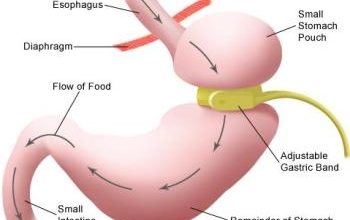How To Remove Broken Abutment Screws In Dental Implants?

The discovery of dental implants is one of the most useful things in dentistry. But there are times when the procedure fails due to a broken abutment.
You might be a little aware of dental implants and have seen a dentist using an implant abutment drill for a dental procedure. However, sometimes after using appropriate tools and equipment, the patient gets a fracture of the abutment screws.
In this article, we will be discussing the techniques for removing broken abutment screws from dental implants. Read on to know the further procedure.
Understanding Dental Implant
Dental implants are artificial structures. The dental surgeon inserts it into the jawbone of a patient. The dental implant comes into play when a patient loses two or more 2 teeth.
In 1952, Per-Ingvar Branemark (an orthopedic Swedish surgeon), discovered dental implants. The implant abutment drills are used for the whole procedure.
Nowadays, this treatment is a prosthetic replacement for your missing teeth. It allows fusing with other bones within a span of some months.
Usually, the dental implant is used when you need to replace some missing tooth. An “artificial tooth root” simply works for holding replaced teeth or a bridge. Well, the best part is it stands without affecting any nearby teeth. The fusion of the dental implant and jawbone of a patient is done through Osseointegration.
The implant has titanium; it combines with bone without being shown as an odd object. At this time, the dental implant’s success rate is approximately 98%.
What Is An Abutment Screw In A Dental Implant Procedure?
An abutment screw is an equipment for securing the abutment to the dental implant. The screw threaded and tightened until it reaches the final seating position.
A mechanical or electronic torque measuring equipment shows the torque magnitude applied to an abutment screw. Furthermore, if the implant abutment drill is not used properly, or the wrong dental abutment screw tightening, it may raise severe challenges.
The major and very common problem with a dental implant is the not-required rotation of abutment screws. Moreover, the wrong use of abutment screws may lead to a deleterious impact on the final restoration result, implant components, and the bone.
In short, you can say abutments are small connecting pieces that combine the implants to the prosthesis. Also, you will need a prosthesis and an abutment for dental treatment.
Techniques For Removing Broken Abutment Screws From Dental Implants
To maintain dental hygiene it’s important to remove fragments from teeth. Kreissl et al. have evaluated implant-supported fixed-bridge restorations for five years. Many dental surgeons use bone profiling drills for fixing dental implants.
Moreover, Kreissl et al. found the screw loosening incident approximately at 6.7 percent or approximately 3.9 percent of abutment screw fracture.
The Main Causes of Screw Fractures
First, let’s see the most prominent causes of abutment screw fracture. The reasons for screw loosening in dental implants include:
- The torque wrenching may be inaccurate. It results in torque values over or under the suggested values.
- A connection between the adjacent alveolar bone and the abutment if a pre determined pressure is applied with a torque twist.
- Another cause is no torque wrench while tightening a screw
Many people think that it is usual to check a fracture in an abutment screw. Also, they think it is easy to remove the leftover fragment from teeth. But it is not true!
3 Common Ways For Removing Fractured Abutment Screw
- Scaler
Mainly, the pointed or sharp end helps in teasing the remnant from the abutment screw. No doubt, the scaler is the best way of starting a process.
Although, there are chances that an abutment screw fractures, and the remaining part might be jammed through an uneven edge or metal shard stuck between the implant fixture threads. So, the scaler works by vibrating the left abutment screw’s piece.
- Bur or Handpiece
A half of round bur over a handpiece that rotates clockwise can connect the outer edge of the remaining abutment screw. Moreover, it helps to create a counter-clockwise rotation for loosening the left fragment.
Another option is creating a horizontal slot in the shank. It helps the working of the abutment screw with a straight blade driver for removing the fragment. Furthermore, handpiece working comes with many risks, such as damaging the dental implant fixture inside.
- Reverse-Tapping Rotary Instruments
One more method is to remove broken abutment screws in dental implants mechanically. It’s applicable with the internal (hexed, conical, and hybrid design) and external (hexagon design).
Conclusion
Dental implants are the new age solution for decaying or missing teeth. Dentists use bone profiling drills for the dental implant procedure. It helps in shaping the teeth of a patient. On the other hand, implant abutment drills help connect teeth in the jaw. Now, you might have understood well about dental implants, abutment screws, and removal of the broken screw from a dental implant.
We hope you found this article helpful in understanding the topic well!





